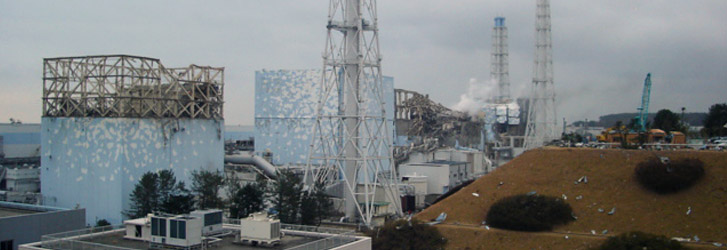Decommissioning Plan of Fukushima Daiichi Nuclear Power > Earthquake & Accident

At 14:46 on March 11, 2011, a tremendous earthquake of 9.0 magnitude occurred undersea off the coast of the Sanriku region of Japan, triggering a massive tsunami on an unprecedented scale that hit the northeastern coast 50 minutes later.
With the earthquake, we lost all the off-site power supplies at the power station, but succeeded in cooling the reactors using emergency power. Units 1 to 3, which were in operation when the earthquake struck, were shut down safely as designed.
However, this emergency power was also lost due to flooding from the tsunami, causing the cooling equipment to become inoperable and stopping the transport of water into the reactors. Due to this, the amount of water in the reactor pressure vessels of Units 1 to 3 decreased.
Currently, for Units 1 and 3, it is supposed that hydrogen, produced by the chemical reaction between fuel claddings exposed from the water and steam, accumulated in the upper part of the reactor buildings and triggered explosions. For Unit 4, it is supposed that hydrogen that flowed in through the joint section of the exhaust stack accumulated when the air in Unit 3’s primary containment vessel was vented to the outside, leading to the explosion.
More Details:
The Development of and Lessons from the Fukushima Daiichi Nuclear Accident (PDF 33.1MB)![]()
The Great East Japan Earthquake and Current Status of Nuclear Power Stations![]()
© Tokyo Electric Power Company Holdings, Inc.